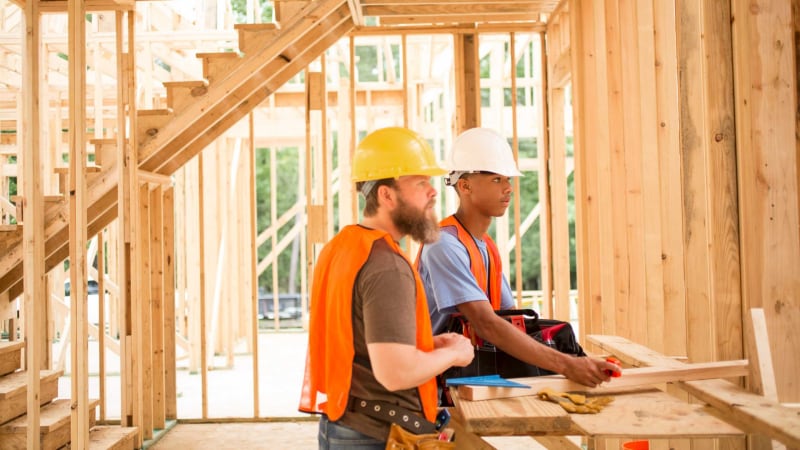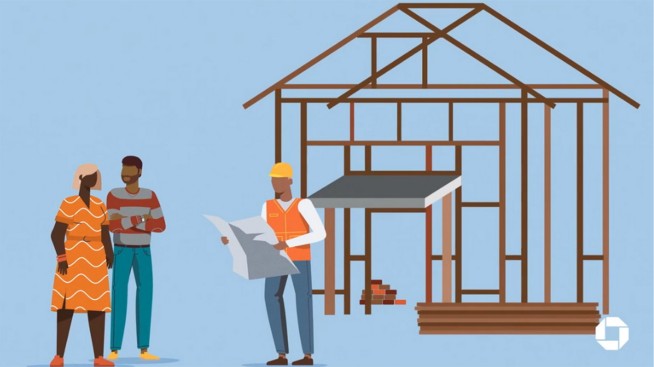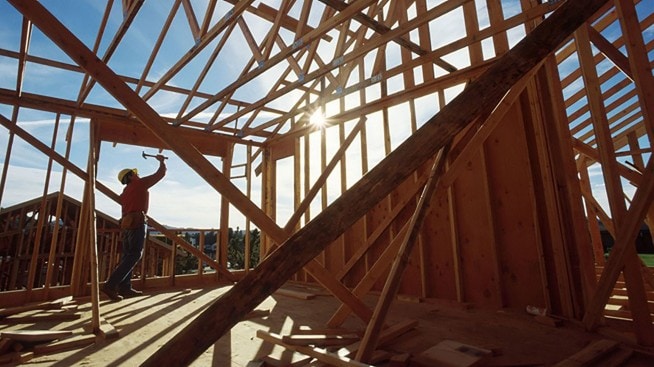Accessory dwelling unit (ADU), explained

This article is for educational purposes only. JPMorgan Chase Bank, N.A., currently offers home equity lines of credit (HELOCs) in select states and does not offer home equity loans in any state. Please talk with a Home Lending Advisor to see if HELOCs are available in your area. Any information described in this article may vary by lender.
An accessory dwelling unit (ADU) is a secondary, self-contained housing unit on the same lot as a primary residential structure. There are several types of ADUs that may come with benefits, from the simple perk of extra space to potentially providing some extra cash flow to the owner as a rental space. Because of these benefits, ADUs may seem enticing to homeowners exploring ways to increase livable space or real estate investors seeking additional income. That said, you may want to explore the pros, cons and key considerations of building and owning an ADU before deciding.
Accessory Dwelling Unit (ADU), meaning
An ADU is essentially a second home on your property. ADUs (sometimes referred to as a granny flat, in-law unit or simply a guest house) are often separate from the primary residence and must feature a kitchen and bathroom to be considered an ADU.
Types of ADUs in real estate
At its core, an ADU is a type of house that exists on the same property lot as a bigger home that was likely there first. There are several types of ADUs. Some include:
Detached ADU
A detached ADU is a standalone structure on the same lot as the primary residence — like a guest house or a modest bungalow. Prefabricated options abound for these petite houses, which makes it possible to shave some time off the construction period. Since they're often detached or otherwise separated from the main home, they may be a great option for anyone looking to create space with a little privacy.
Above-garage ADU
Some garages have attic space that makes them prime candidates for ADU conversion. As most garages accommodate one to three cars, above-garage ADUs come in a variety of sizes. An apartment over a three-car garage may even have multiple bedrooms, making it a great option for someone who hosts groups of guests or wants to rent to a family. Above-garage ADUs allow you to enjoy the perks of an additional apartment while still using the garage to protect your vehicles.
Basement conversion ADU
Unlike a detached ADU, basement conversions make use of space in the primary residence. Basement ADUs have their own, separate entrances from the main home and may or may not have a door that attaches the two residences.
Garage conversion ADU
While above-garage ADUs allow the structure to continue functioning as a garage, others, such as carriage houses, might choose to evict cars in favor of human residents. These types of conversions make a garage into a livable space. While they may need considerable work to be legally habitable, conversions may be more cost-effective and faster than constructing a brand-new unit. If you don't need the space for a vehicle, a garage conversion ADU may be right for you.
Attached or addition ADU
Instead of building a detached ADU, some homeowners will opt to construct an addition to their home that functions as an ADU. These ADUs are attached to the main home but have a separate entrance. They tend to be one to two stories tall, depending on the size of the primary home. An attached ADU may be a good option if you live on a smaller lot or lack a convertible garage or workshop.
Building an ADU
Building an ADU, like any structure, can be an involved process. There's a lot for homeowners to consider, from local zoning laws to design and functionality. Here are some key considerations for anyone thinking about adding an ADU to their property.
- Permits and approvals: Depending on where you live, you may need to obtain various permits and approvals from local housing authorities or homeowners associations before building your ADU. Consider familiarizing yourself with the process to avoid any time-sucking surprises that may delay your project.
- Infrastructure and utilities: Because ADUs require the same utilities as your primary residence, it could be a good idea to make sure your property can accommodate an ADU construction or conversion, and that existing utilities (gas, electricity, water) will be able to support it.
- Accessibility: If you're building an ADU for an elderly family member or anyone with a disability, consider investing in a first-floor unit or adding features that help make getting around easier for people with mobility challenges.
- Insurance: Because an ADU may affect your homeowner's insurance, try to reach out to your provider to make sure you're aware of the impact and whether you'll need to purchase additional coverage.
- Appliances: As ADUs tend to be on the smaller size, it could make sense to invest in smaller appliances. A modestly sized dishwasher, refrigerator or stove could help save valuable space in the unit.
- Local regulations and zoning laws: When building an ADU, consider contacting the local government regarding your area's regulations and zoning laws. These regulations may vary greatly between states or even cities. Some places, such as California, are more flexible than others when it comes to ADU construction and rental, so it may be a good idea to put in some time and research to ensure the ADU of your dreams is legally allowed — especially if you're seeking financing for its construction.
- Budget and financing: Try to determine a clear-cut budget before building your ADU. This means understanding the costs of construction, including materials, as well as any applicable permits and fees. If you're looking to have your construction financed, consider looking closely at your options, as there are several routes homeowners may take to pay for their project.
Financing an ADU
If you're looking to finance your ADU, there are a few options to consider. Out of the below list, Chase only offers cash-out refinances, so you may need to do additional research depending on your financing needs:
- Home equity loan: A home equity loan typically allows you to borrow a percentage of your home's equity in a lump sum and is paid back in monthly installments.
- Cash-out refinance: A cash-out refinance allows a homeowner to refinance their current mortgage by taking out a new mortgage worth more than your current one. You then receive the difference in cash.
- Construction loan: In the case of home construction loans, money is generally paid directly to the builder in installments. These are typically short-term loans to be paid off in about two years.
- Manufacturer's financing: If you're investing in a prefabricated ADU, some manufacturers may offer their own financing options. This would have to be explored with the help of the manufacturer instead of a lender.
- HELOC: A HELOC is a revolving line of credit secured by the equity you have in your home. It works similarly to a credit card and is able to be drawn from and repaid repeatedly.
ADU pros and cons
If you're still on the fence about building an ADU, here are some final pros and cons to consider:
Pros of ADUs:
- Extra space: An ADU may provide you with additional space for visiting guests or a rental unit.
- Additional income: A newly-built ADU or conversion may help you generate passive income if you decide to rent it out. It could also make the property more attractive to potential buyers, especially in areas with a high demand for housing.
- Increased property value: An ADU could potentially add to your overall property value as it often increases a property's livable space and may allow homeowners the option of rental income.
- Affordable housing: ADUs may help address housing shortages by providing smaller, more affordable living spaces in areas with otherwise limited options.
- Eco-friendly living: ADUs could potentially be a sustainable housing option as they may create additional housing in established neighborhoods within proximity of jobs. Fewer commuters typically equates to less pollution. Additionally, because most ADUs are on the smaller side or converted from existing structures, they generally require fewer materials than other structures, which makes for a lower carbon footprint.
Cons of ADUs
- Responsibilities as a landlord: Renting out your ADU may mean a lot of time spent answering to your tenant, maintaining the space and potentially dealing with costly repairs.
- Cost: While extra space might be a plus, it does come with additional utility and insurance payments, which can add up over time.
- Lack of privacy: Having an ADU on your property could affect your privacy if you're renting it out to a tenant, whether you know them or not.
- Loss of space: That storage space in the garage? You may end up missing it. Loss of space can be a potential downside to building an ADU.
- Regulations: Navigating the complexities of local regulations, permits and zoning may be time-consuming, especially if you live in an area with strict restrictions regarding ADUs.
In summary
Accessory dwelling units (ADU) are secondary housing units that share many features with a primary residence. If you're interested in purchasing or building an ADU for your property, it's best to familiarize yourself with local zoning laws and ordinances before beginning construction. ADUs may be used to generate income in the form of rent or to provide extra space for guests, however, they could also potentially result in costly maintenance, lack of privacy and loss of space. Speak with a home lending advisor to discuss which products Chase can or cannot offer.



